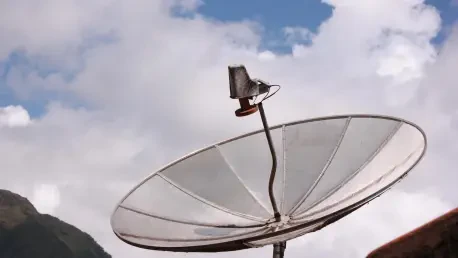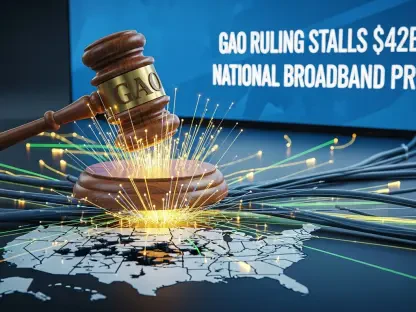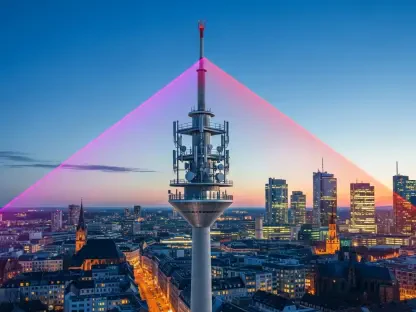The television industry stands at a pivotal crossroads, with traditional satellite services facing an unprecedented challenge from the rapid rise of internet-based streaming platforms, prompting major players like Sky TV to rethink their long-standing business models. For decades, Sky has been synonymous with satellite television, delivering content through dishes mounted on homes across the UK. Yet, as consumer preferences shift toward on-demand, flexible viewing options, questions arise about whether Sky is preparing to leave its satellite roots behind in favor of a streaming-dominated future. This transition, while seemingly inevitable given broader industry trends, is fraught with complexities, especially for a company with a massive customer base still tethered to older technology. Exploring this shift reveals not only Sky’s strategic direction but also the broader implications for viewers navigating a rapidly evolving media landscape, where innovation and tradition often collide.
Streaming as the New Frontier
The push toward streaming services has become a defining trend in the television sector, and Sky TV is no exception in aligning its strategy with this digital wave. With offerings like Sky Glass and Sky Stream, the company is clearly prioritizing internet-based solutions over traditional satellite hardware. Industry experts have noted that Sky is unlikely to invest in new satellite boxes, instead focusing on sleeker, more cost-effective streaming devices designed to attract a younger, tech-savvy audience. This pivot, which has been underway for several years, reflects a broader vision of television consumption where flexibility and instant access reign supreme. The anticipated “big TV switch off” of satellite services, projected for the 2030s, further underscores why Sky is betting on streaming as the backbone of its future operations. However, while the direction seems clear, the pace of this transformation has raised eyebrows, with some suggesting that Sky’s streaming products have yet to meet the high expectations set for them in terms of market penetration and user adoption.
Beyond the allure of innovation, Sky’s move to streaming is also a defensive tactic in a fiercely competitive market saturated with rival platforms offering similar on-demand content. Maintaining control over the customer experience is paramount for Sky, and streaming allows the company to customize interfaces, bundle services, and gather valuable user data—advantages that are harder to achieve with satellite systems. Yet, this transition is not without hurdles, particularly when considering the millions of subscribers still reliant on the Sky Q platform, a satellite-based service that remains a cornerstone of the company’s revenue. Balancing the need to innovate with the risk of alienating this loyal base presents a delicate challenge. The slower-than-expected uptake of streaming options like Sky Glass indicates that many customers are either hesitant to abandon familiar technology or face barriers such as unreliable internet connections, highlighting the uneven nature of this industry-wide shift toward digital delivery.
Challenges with the Satellite Legacy
Sky’s substantial base of Sky Q users represents both a strength and a vulnerability as the company navigates its streaming ambitions. These customers, who form a lucrative segment, have grown accustomed to the reliability and extensive channel offerings of satellite television, often viewing it as a hallmark of premium service. Industry analysts caution that pushing too aggressively toward streaming risks frustrating this group, especially when cheaper alternative TV platforms are readily available in the market. The tension between retaining these subscribers and driving them toward newer technologies is palpable, as Sky must ensure a smooth transition without sacrificing customer satisfaction. This balancing act is complicated by the fact that many rural or less connected areas may lack the robust internet infrastructure needed to support high-quality streaming, leaving satellite as the more practical option for a significant portion of the audience.
Moreover, the financial implications of phasing out satellite services cannot be overlooked, as Sky Q subscribers contribute significantly to the company’s bottom line through long-term contracts and premium packages. While streaming offers lower hardware costs and scalability, the short-term revenue impact of losing satellite customers to competitors or alternative solutions could be substantial. Sky must tread carefully to avoid a backlash from those who feel abandoned by a sudden shift in focus. The challenge lies in crafting a strategy that gradually migrates users to streaming while maintaining the trust and loyalty of those still tied to traditional setups. This dynamic illustrates a broader dilemma within the industry: how to embrace cutting-edge technology without leaving behind the very customers who built the foundation of a company’s success over decades of operation.
Freesat as a Viable Alternative
For Sky customers with older satellite dishes who are wary of switching to streaming, Freesat emerges as a practical and cost-effective alternative that leverages existing equipment. This free-to-air service allows users to access over 100 channels, including many in high definition, by simply connecting their current satellite dish to a compatible Freesat 4K TV Box. The appeal lies in its simplicity and affordability, offering a way for subscribers to cancel paid Sky plans without needing to invest in new hardware, provided their dish remains functional and properly aligned. Freesat’s wide coverage across the UK makes it an accessible option for many, serving as a bridge for those not yet ready to embrace full streaming or lacking the necessary internet speeds. However, potential limitations such as signal obstructions or outdated dish components can affect performance, reminding users that even free solutions require some technical considerations.
Beyond its immediate benefits, Freesat also reflects a broader trend of consumers seeking low-cost or no-cost viewing options amid rising subscription fees and economic pressures. For Sky customers disillusioned by the push toward streaming or unwilling to upgrade to newer platforms, Freesat provides a middle ground that preserves the familiarity of satellite technology while still offering access to popular content. This alternative underscores the diversity of viewer needs in today’s market, where not everyone is prepared to jump on the streaming bandwagon. As Sky continues to refine its digital-first approach, the presence of Freesat serves as a reminder that satellite technology still holds relevance for a significant audience. The interplay between maintaining traditional services and adopting innovative ones will likely shape customer choices for years to come, with Freesat playing a key role for those prioritizing affordability and ease over the latest technological advancements.
Navigating the Path Forward
Reflecting on Sky TV’s journey, it becomes evident that the shift from satellite to streaming has been a calculated, albeit challenging, endeavor marked by both ambition and caution. The company has grappled with aligning its forward-looking vision with the practical realities of a diverse customer base, many of whom value the reliability of traditional setups. As the industry has evolved, Sky’s efforts to champion streaming platforms like Sky Glass and Sky Stream have met with mixed results, revealing the complexities of transforming an established satellite giant into a digital frontrunner. Looking ahead, Sky needs to prioritize seamless migration plans, ensuring that loyal subscribers feel supported rather than sidelined. Investing in robust customer education about streaming benefits and addressing internet access disparities could ease this transition. Additionally, maintaining a hybrid approach that respects satellite users while expanding digital offerings might prove essential in sustaining market dominance amidst fierce competition.









